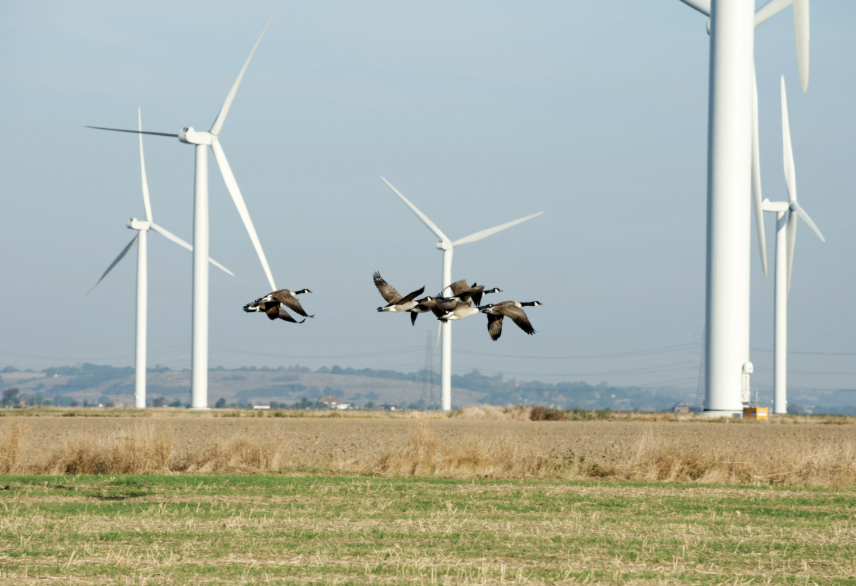A report released in June by the Center of the American Experiment (CAE) details the myriad environmental and ecological downsides of the push to transform the American energy sector via the widespread adoption of “renewable” technologies such as wind and solar.
In Shattered Green Dreams: The Environmental Costs of Wind and Solar, CAE demonstrates the many tradeoffs that will be made if policymakers at the federal and state level pursue a transition away from energy generation from fossil fuels such as natural gas, oil, and coal in favor of these “renewable” sources.
“Every form of energy generation comes with its own set of challenges and benefits,” the report explains. “All renewable and hydrocarbon energy sources — wind and solar, hydropower, coal, natural gas, and nuclear — have environmental impacts. The mining of raw materials, manufacturing, and construction, the landscape footprints and ecological impacts of utility-scale wind and solar projects, and repowering and recycling costs must be considered. The negative impacts of wind and solar on the environment are too often overlooked. A wide variety and large quantity of minerals are used in solar panels, wind turbines, battery storage, transmission lines, and more. The U.S. currently sources most of its minerals from foreign countries that do not adhere to modern environmental or worker health and safety standards, which exacerbates environmental impacts that could be managed with domestic mining.”
One main problem the CAE report points out is the low energy density of wind and solar. In electricity generation, low energy density refers to a fuel or energy source that contains relatively little usable energy per unit of volume or mass. This means that more of the fuel or resource is needed—and more space and infrastructure is required—to generate the same amount of electricity as a high-energy-density source. As the CAE report points out, the land use footprint of wind and solar is “disproportionally large.”
According to CAE, “wind turbines and solar panels need at least 10 times as much land per unit of power produced as coal- or natural gas-fired power plants. To generate the same amount of electricity as a 1 GW nuclear plant, which occupies approximately 1.3 square miles, one would need between 45 and 75 square miles of solar panels or between 260 and 3,360 square miles of wind turbines. The latter is larger than the combined areas of Delaware and Rhode Island. If the U.S. relied entirely on wind turbines for electricity, it would need about twice the size of the state of California [to generate enough electricity to satisfy American needs.]”
Further, the shorter lifespans of these “renewable” technologies are compounding disposal challenges, leading to further environmental degradation. “Repowering and replacing wind turbines occurred at a median age of 10 years in 2021, motivated by financial reasons like requalifying for the federal Production Tax Credit,” CAE points out. “Only about 10 percent of solar panels are recycled today due to cost effectiveness, with U.S. solar panel waste expected to reach between seven and 10 million tons by 2050. Wind turbine blades, made of fiberglass or carbon fiber, are challenging and uneconomic to recycle, with 2.2 million tons likely to enter landfills by 2050. Wind turbines, solar panels, and batteries must also be disposed of or recycled correctly to avoid exposure to hazardous chemicals like lithium, silicon tetrafluoride, selenium, sulfur hexafluoride, lead, and cadmium.”
Another issue with the growing footprint of wind and solar farms is their detrimental impact on surrounding wildlife, of which there is mounting evidence. “The National Oceanic and Atmospheric Administration acknowledges that offshore wind poses risks to whales through exposure to noise, strikes from vessels, entanglement in marine debris, and changes to habitat,” the report notes. “Birds and bats, including some vulnerable species, are susceptible to collision with wind turbine blades as well as habitat loss, fragmentation, and displacement. Solar panels also cause bird and bat collisions in part due to the ‘lake effect,’ where reflective panels resemble bodies of water from afar.”
Despite the vaunting of wind and solar technology from certain circles, it is important to remember that much of the reduction in carbon dioxide (CO2) and greenhouse gas (GHG) emissions in the United States is due to technological advances from the fossil fuel industry. According to the U.S. Energy Information Administration’s (EIA) latest annual U.S. Energy-Related Carbon Dioxide Emissions study, natural gas is responsible for 61 percent of the power sector’s emissions reductions since 2005.
Another study from researchers at Miami University in Ohio, published in the peer-reviewed journal Energy Economics in May, found that between 2007 and 2019, the fracking-induced shale boom was responsible for an average annual per capita reduction in CO2 emissions in the United States of 10.5 percent, as well as a 7.5 percent reduction in annual total GHG emissions.
“We find that the shale gas boom has played a pivotal role in reshaping the U.S. energy landscape, resulting in a greener economy,” the researchers conclude.
In January, the U.S. Department of Energy’s National Energy Technology Laboratory found the GHG-emission intensity of the country’s energy profile had decreased by 32 percent between 2017 and 2020.
“Energy policy should be driven by facts, not by surface-level assumptions,” the report concludes. “All forms of energy entail environmental impacts. An honest accounting of the negative impacts of wind, solar, and battery storage shows that they are far less than the unqualified good that proponents suggest. The material intensity, land use demands, and lifecycle challenges of wind and solar must be acknowledged by policymakers. Similarly, the scalability, reliability, and small land use footprints of coal, natural gas, oil, and nuclear are substantial benefits.”
The oil and natural gas deposits found throughout the United States are abundant, affordable, and environmentally safe. Moreover, they can ensure the United States is the world’s largest energy producer well beyond the 21st century. Therefore, policymakers should refrain from placing unnecessary burdens on the natural gas and oil industries which positively impact state economies and are committed to safe, environmentally responsible extraction. Further, policymakers should take the environmental, ecological, and cost concerns raised by CAE’s report into account when debating on whether to promote wind and solar sources of energy. Finally, they should consult the Heartland Institute Policy Study, “How States Can Push Back Against the Destructive Expansion of Industrial Solar Power,” for a guide to prevent large-scale solar development in their home states.
Heartland Impact can send an expert to your state to testify or brief your caucus; host an event in your state; or send you further information on a topic. Please don’t hesitate to contact us if we can be of assistance! If you have any questions or comments, contact Cameron Sholty, at csholty@heartlandimpact.org or 312/377- 4000.


